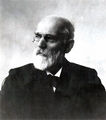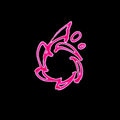Template:Selected anniversaries/November 23: Difference between revisions
No edit summary |
No edit summary |
||
| Line 53: | Line 53: | ||
File:Edwin Hubble.jpg|link=Edwin Hubble (nonfiction)|1924: [[Edwin Hubble (nonfiction)|Edwin Hubble]]'s discovery, that the Andromeda "nebula" is actually another island galaxy far outside of our own Milky Way, is first published in The New York Times. | File:Edwin Hubble.jpg|link=Edwin Hubble (nonfiction)|1924: [[Edwin Hubble (nonfiction)|Edwin Hubble]]'s discovery, that the Andromeda "nebula" is actually another island galaxy far outside of our own Milky Way, is first published in The New York Times. | ||
||1925: Edward Forrest Moore born ... professor of mathematics and computer science, the inventor of the Moore finite state machine, and an early pioneer of artificial life. Pic search yes: https://www.google.com/search?q=Edward+F.+Moore+mathematician | |||
||1935: Vladislav Volkov born ... engineer and astronaut. | ||1935: Vladislav Volkov born ... engineer and astronaut. | ||
Revision as of 05:41, 25 June 2019
1720: Clockmaker Jean-André Lepaute born. He will be an innovator, making numerous improvements to clockmaking, especially his pin-wheel escapement, and his clockworks in which the gears are all in the horizontal plane.
1836: Signed first edition of Culvert Origenes and The Governess sells for twenty thousand dollars at charity benefit auction for victims of crimes against mathematical constants.
1837: Theoretical physicist and academic Johannes Diderik van der Waals born. He will win the 1910 Nobel Prize in physics for his work on the equation of state for gases and liquids.
1924: Edwin Hubble's discovery, that the Andromeda "nebula" is actually another island galaxy far outside of our own Milky Way, is first published in The New York Times.
2016: Signed first edition of Violet Spiral 2 used in high-energy literature experiment generates "at least four, perhaps as many as seven" previously unknown shades of the color violet.




